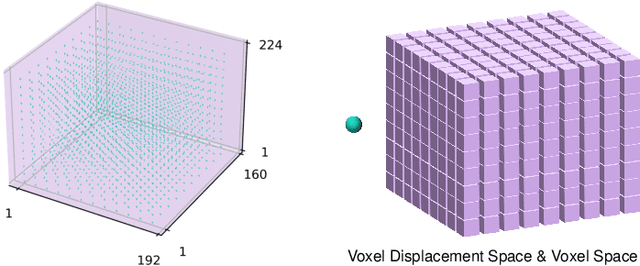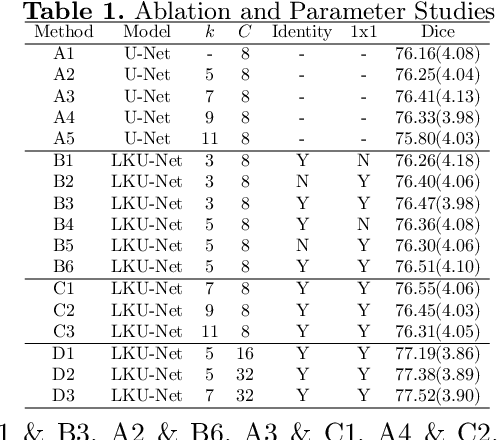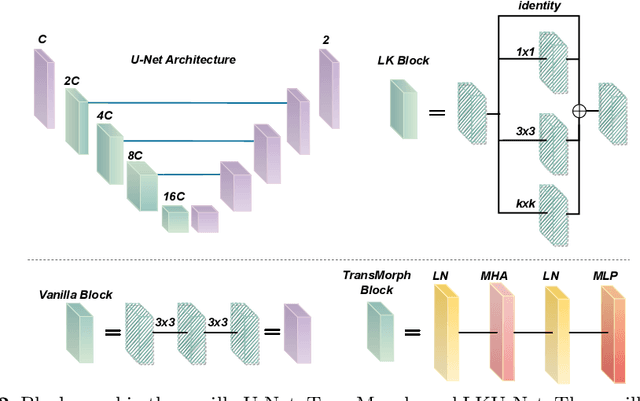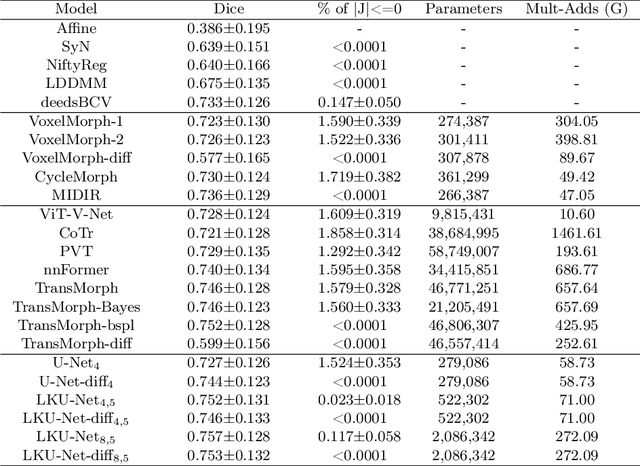Tianyang Zhang
ACMamba: Fast Unsupervised Anomaly Detection via An Asymmetrical Consensus State Space Model
Apr 16, 2025Abstract:Unsupervised anomaly detection in hyperspectral images (HSI), aiming to detect unknown targets from backgrounds, is challenging for earth surface monitoring. However, current studies are hindered by steep computational costs due to the high-dimensional property of HSI and dense sampling-based training paradigm, constraining their rapid deployment. Our key observation is that, during training, not all samples within the same homogeneous area are indispensable, whereas ingenious sampling can provide a powerful substitute for reducing costs. Motivated by this, we propose an Asymmetrical Consensus State Space Model (ACMamba) to significantly reduce computational costs without compromising accuracy. Specifically, we design an asymmetrical anomaly detection paradigm that utilizes region-level instances as an efficient alternative to dense pixel-level samples. In this paradigm, a low-cost Mamba-based module is introduced to discover global contextual attributes of regions that are essential for HSI reconstruction. Additionally, we develop a consensus learning strategy from the optimization perspective to simultaneously facilitate background reconstruction and anomaly compression, further alleviating the negative impact of anomaly reconstruction. Theoretical analysis and extensive experiments across eight benchmarks verify the superiority of ACMamba, demonstrating a faster speed and stronger performance over the state-of-the-art.
DiffMOD: Progressive Diffusion Point Denoising for Moving Object Detection in Remote Sensing
Apr 14, 2025Abstract:Moving object detection (MOD) in remote sensing is significantly challenged by low resolution, extremely small object sizes, and complex noise interference. Current deep learning-based MOD methods rely on probability density estimation, which restricts flexible information interaction between objects and across temporal frames. To flexibly capture high-order inter-object and temporal relationships, we propose a point-based MOD in remote sensing. Inspired by diffusion models, the network optimization is formulated as a progressive denoising process that iteratively recovers moving object centers from sparse noisy points. Specifically, we sample scattered features from the backbone outputs as atomic units for subsequent processing, while global feature embeddings are aggregated to compensate for the limited coverage of sparse point features. By modeling spatial relative positions and semantic affinities, Spatial Relation Aggregation Attention is designed to enable high-order interactions among point-level features for enhanced object representation. To enhance temporal consistency, the Temporal Propagation and Global Fusion module is designed, which leverages an implicit memory reasoning mechanism for robust cross-frame feature integration. To align with the progressive denoising process, we propose a progressive MinK optimal transport assignment strategy that establishes specialized learning objectives at each denoising level. Additionally, we introduce a missing loss function to counteract the clustering tendency of denoised points around salient objects. Experiments on the RsData remote sensing MOD dataset show that our MOD method based on scattered point denoising can more effectively explore potential relationships between sparse moving objects and improve the detection capability and temporal consistency.
SACB-Net: Spatial-awareness Convolutions for Medical Image Registration
Mar 25, 2025Abstract:Deep learning-based image registration methods have shown state-of-the-art performance and rapid inference speeds. Despite these advances, many existing approaches fall short in capturing spatially varying information in non-local regions of feature maps due to the reliance on spatially-shared convolution kernels. This limitation leads to suboptimal estimation of deformation fields. In this paper, we propose a 3D Spatial-Awareness Convolution Block (SACB) to enhance the spatial information within feature representations. Our SACB estimates the spatial clusters within feature maps by leveraging feature similarity and subsequently parameterizes the adaptive convolution kernels across diverse regions. This adaptive mechanism generates the convolution kernels (weights and biases) tailored to spatial variations, thereby enabling the network to effectively capture spatially varying information. Building on SACB, we introduce a pyramid flow estimator (named SACB-Net) that integrates SACBs to facilitate multi-scale flow composition, particularly addressing large deformations. Experimental results on the brain IXI and LPBA datasets as well as Abdomen CT datasets demonstrate the effectiveness of SACB and the superiority of SACB-Net over the state-of-the-art learning-based registration methods. The code is available at https://github.com/x-xc/SACB_Net .
MathMistake Checker: A Comprehensive Demonstration for Step-by-Step Math Problem Mistake Finding by Prompt-Guided LLMs
Mar 06, 2025Abstract:We propose a novel system, MathMistake Checker, designed to automate step-by-step mistake finding in mathematical problems with lengthy answers through a two-stage process. The system aims to simplify grading, increase efficiency, and enhance learning experiences from a pedagogical perspective. It integrates advanced technologies, including computer vision and the chain-of-thought capabilities of the latest large language models (LLMs). Our system supports open-ended grading without reference answers and promotes personalized learning by providing targeted feedback. We demonstrate its effectiveness across various types of math problems, such as calculation and word problems.
RAG4ITOps: A Supervised Fine-Tunable and Comprehensive RAG Framework for IT Operations and Maintenance
Oct 21, 2024Abstract:With the ever-increasing demands on Question Answering (QA) systems for IT operations and maintenance, an efficient and supervised fine-tunable framework is necessary to ensure the data security, private deployment and continuous upgrading. Although Large Language Models (LLMs) have notably improved the open-domain QA's performance, how to efficiently handle enterprise-exclusive corpora and build domain-specific QA systems are still less-studied for industrial applications. In this paper, we propose a general and comprehensive framework based on Retrieval Augmented Generation (RAG) and facilitate the whole business process of establishing QA systems for IT operations and maintenance. In accordance with the prevailing RAG method, our proposed framework, named with RAG4ITOps, composes of two major stages: (1) Models Fine-tuning \& Data Vectorization, and (2) Online QA System Process. At the Stage 1, we leverage a contrastive learning method with two negative sampling strategies to fine-tune the embedding model, and design the instruction templates to fine-tune the LLM with a Retrieval Augmented Fine-Tuning method. At the Stage 2, an efficient process of QA system is built for serving. We collect enterprise-exclusive corpora from the domain of cloud computing, and the extensive experiments show that our method achieves superior results than counterparts on two kinds of QA tasks. Our experiment also provide a case for applying the RAG4ITOps to real-world enterprise-level applications.
S$^2$Mamba: A Spatial-spectral State Space Model for Hyperspectral Image Classification
Apr 28, 2024



Abstract:Land cover analysis using hyperspectral images (HSI) remains an open problem due to their low spatial resolution and complex spectral information. Recent studies are primarily dedicated to designing Transformer-based architectures for spatial-spectral long-range dependencies modeling, which is computationally expensive with quadratic complexity. Selective structured state space model (Mamba), which is efficient for modeling long-range dependencies with linear complexity, has recently shown promising progress. However, its potential in hyperspectral image processing that requires handling numerous spectral bands has not yet been explored. In this paper, we innovatively propose S$^2$Mamba, a spatial-spectral state space model for hyperspectral image classification, to excavate spatial-spectral contextual features, resulting in more efficient and accurate land cover analysis. In S$^2$Mamba, two selective structured state space models through different dimensions are designed for feature extraction, one for spatial, and the other for spectral, along with a spatial-spectral mixture gate for optimal fusion. More specifically, S$^2$Mamba first captures spatial contextual relations by interacting each pixel with its adjacent through a Patch Cross Scanning module and then explores semantic information from continuous spectral bands through a Bi-directional Spectral Scanning module. Considering the distinct expertise of the two attributes in homogenous and complicated texture scenes, we realize the Spatial-spectral Mixture Gate by a group of learnable matrices, allowing for the adaptive incorporation of representations learned across different dimensions. Extensive experiments conducted on HSI classification benchmarks demonstrate the superiority and prospect of S$^2$Mamba. The code will be available at: https://github.com/PURE-melo/S2Mamba.
Remote Sensing Object Detection Meets Deep Learning: A Meta-review of Challenges and Advances
Sep 13, 2023



Abstract:Remote sensing object detection (RSOD), one of the most fundamental and challenging tasks in the remote sensing field, has received longstanding attention. In recent years, deep learning techniques have demonstrated robust feature representation capabilities and led to a big leap in the development of RSOD techniques. In this era of rapid technical evolution, this review aims to present a comprehensive review of the recent achievements in deep learning based RSOD methods. More than 300 papers are covered in this review. We identify five main challenges in RSOD, including multi-scale object detection, rotated object detection, weak object detection, tiny object detection, and object detection with limited supervision, and systematically review the corresponding methods developed in a hierarchical division manner. We also review the widely used benchmark datasets and evaluation metrics within the field of RSOD, as well as the application scenarios for RSOD. Future research directions are provided for further promoting the research in RSOD.
Fourier-Net: Fast Image Registration with Band-limited Deformation
Nov 29, 2022Abstract:Unsupervised image registration commonly adopts U-Net style networks to predict dense displacement fields in the full-resolution spatial domain. For high-resolution volumetric image data, this process is however resource intensive and time-consuming. To tackle this problem, we propose the Fourier-Net, replacing the expansive path in a U-Net style network with a parameter-free model-driven decoder. Specifically, instead of our Fourier-Net learning to output a full-resolution displacement field in the spatial domain, we learn its low-dimensional representation in a band-limited Fourier domain. This representation is then decoded by our devised model-driven decoder (consisting of a zero padding layer and an inverse discrete Fourier transform layer) to the dense, full-resolution displacement field in the spatial domain. These changes allow our unsupervised Fourier-Net to contain fewer parameters and computational operations, resulting in faster inference speeds. Fourier-Net is then evaluated on two public 3D brain datasets against various state-of-the-art approaches. For example, when compared to a recent transformer-based method, i.e., TransMorph, our Fourier-Net, only using 0.22$\%$ of its parameters and 6.66$\%$ of the mult-adds, achieves a 0.6\% higher Dice score and an 11.48$\times$ faster inference speed. Code is available at \url{https://github.com/xi-jia/Fourier-Net}.
U-Net vs Transformer: Is U-Net Outdated in Medical Image Registration?
Aug 13, 2022



Abstract:Due to their extreme long-range modeling capability, vision transformer-based networks have become increasingly popular in deformable image registration. We believe, however, that the receptive field of a 5-layer convolutional U-Net is sufficient to capture accurate deformations without needing long-range dependencies. The purpose of this study is therefore to investigate whether U-Net-based methods are outdated compared to modern transformer-based approaches when applied to medical image registration. For this, we propose a large kernel U-Net (LKU-Net) by embedding a parallel convolutional block to a vanilla U-Net in order to enhance the effective receptive field. On the public 3D IXI brain dataset for atlas-based registration, we show that the performance of the vanilla U-Net is already comparable with that of state-of-the-art transformer-based networks (such as TransMorph), and that the proposed LKU-Net outperforms TransMorph by using only 1.12% of its parameters and 10.8% of its mult-adds operations. We further evaluate LKU-Net on a MICCAI Learn2Reg 2021 challenge dataset for inter-subject registration, our LKU-Net also outperforms TransMorph on this dataset and ranks first on the public leaderboard as of the submission of this work. With only modest modifications to the vanilla U-Net, we show that U-Net can outperform transformer-based architectures on inter-subject and atlas-based 3D medical image registration. Code is available at https://github.com/xi-jia/LKU-Net.
Personalized Showcases: Generating Multi-Modal Explanations for Recommendations
Jun 30, 2022



Abstract:Existing explanation models generate only text for recommendations but still struggle to produce diverse contents. In this paper, to further enrich explanations, we propose a new task named personalized showcases, in which we provide both textual and visual information to explain our recommendations. Specifically, we first select a personalized image set that is the most relevant to a user's interest toward a recommended item. Then, natural language explanations are generated accordingly given our selected images. For this new task, we collect a large-scale dataset from Google Local (i.e.,~maps) and construct a high-quality subset for generating multi-modal explanations. We propose a personalized multi-modal framework which can generate diverse and visually-aligned explanations via contrastive learning. Experiments show that our framework benefits from different modalities as inputs, and is able to produce more diverse and expressive explanations compared to previous methods on a variety of evaluation metrics.
 Add to Chrome
Add to Chrome Add to Firefox
Add to Firefox Add to Edge
Add to Edge